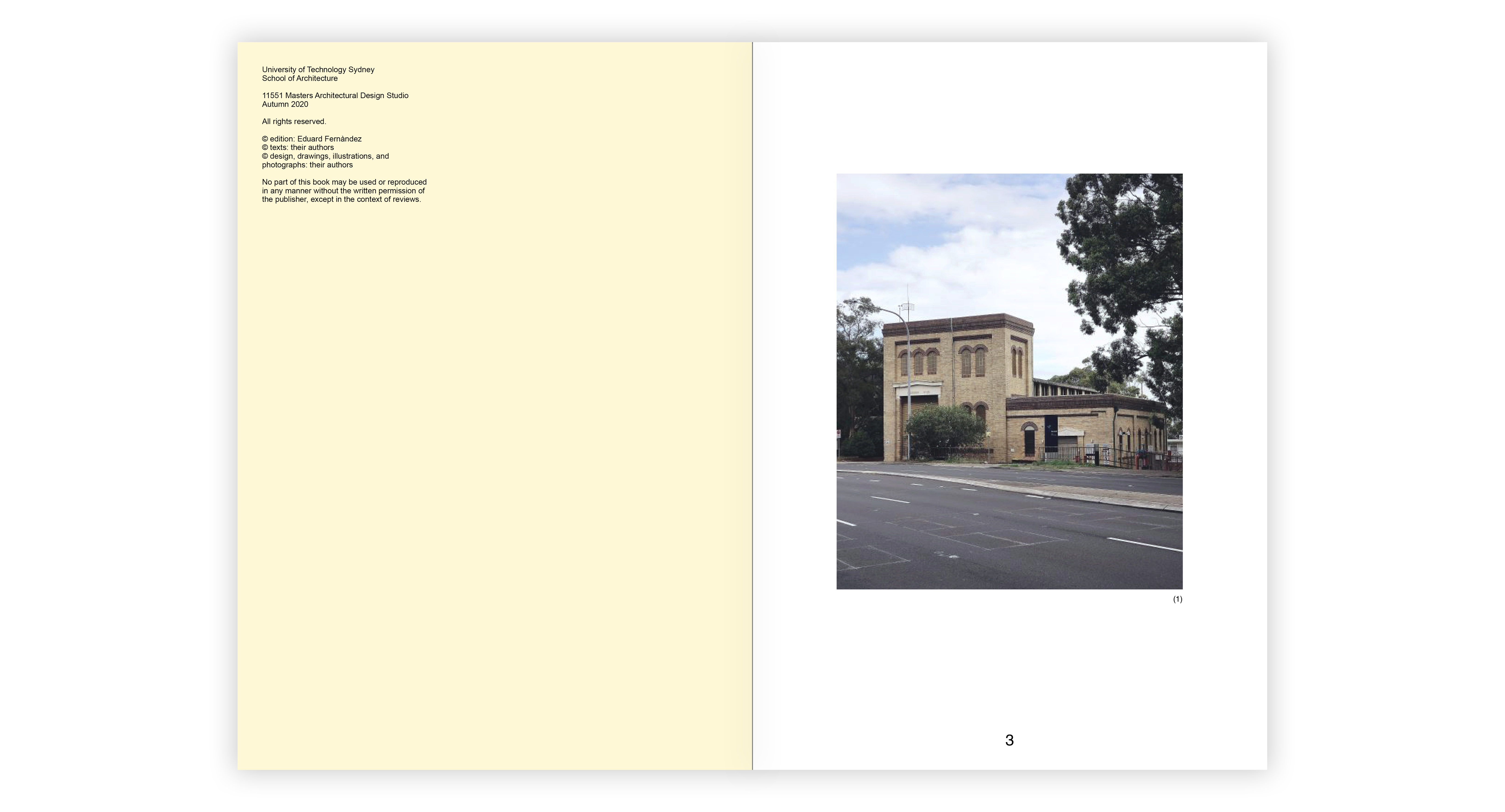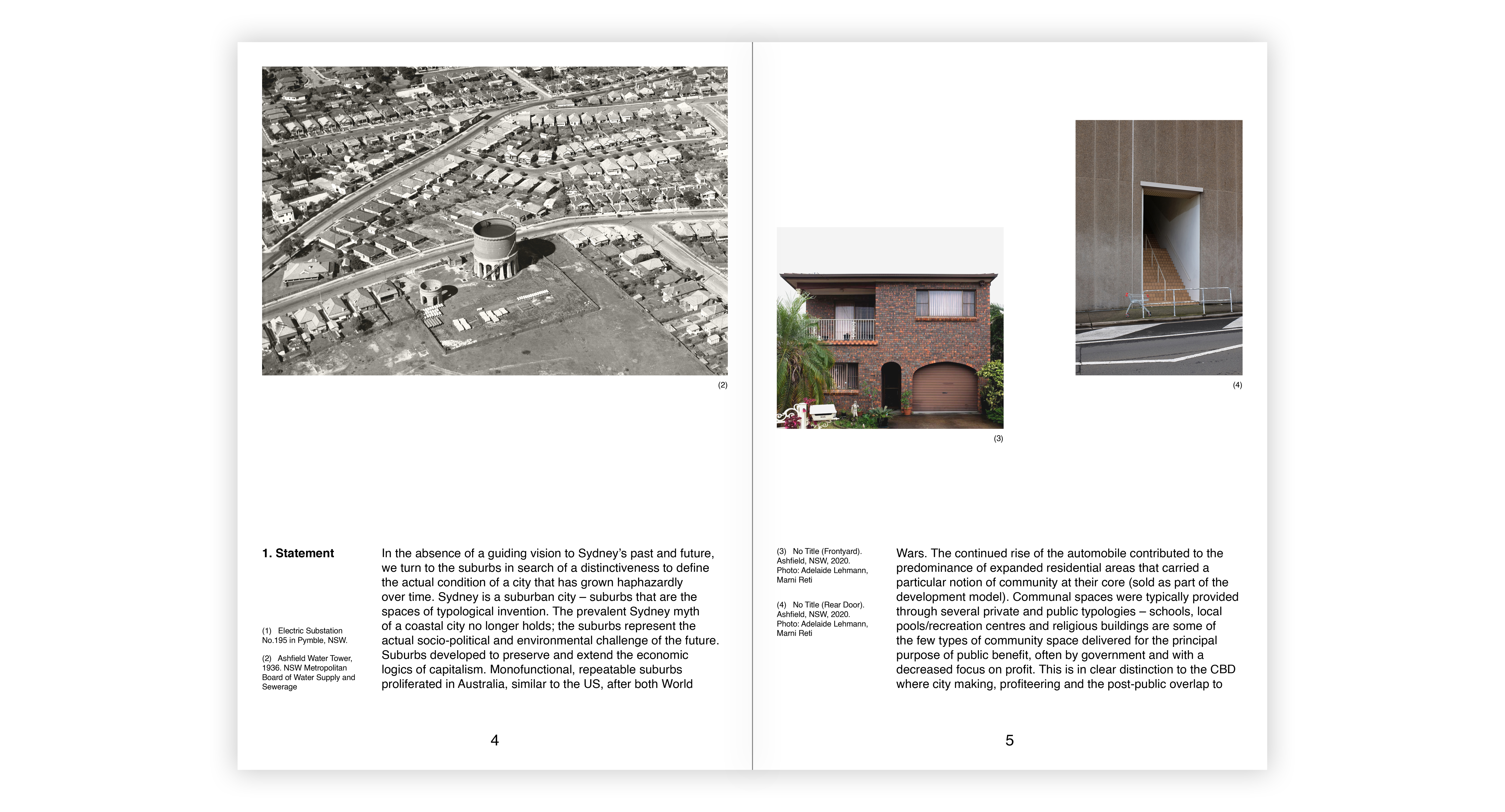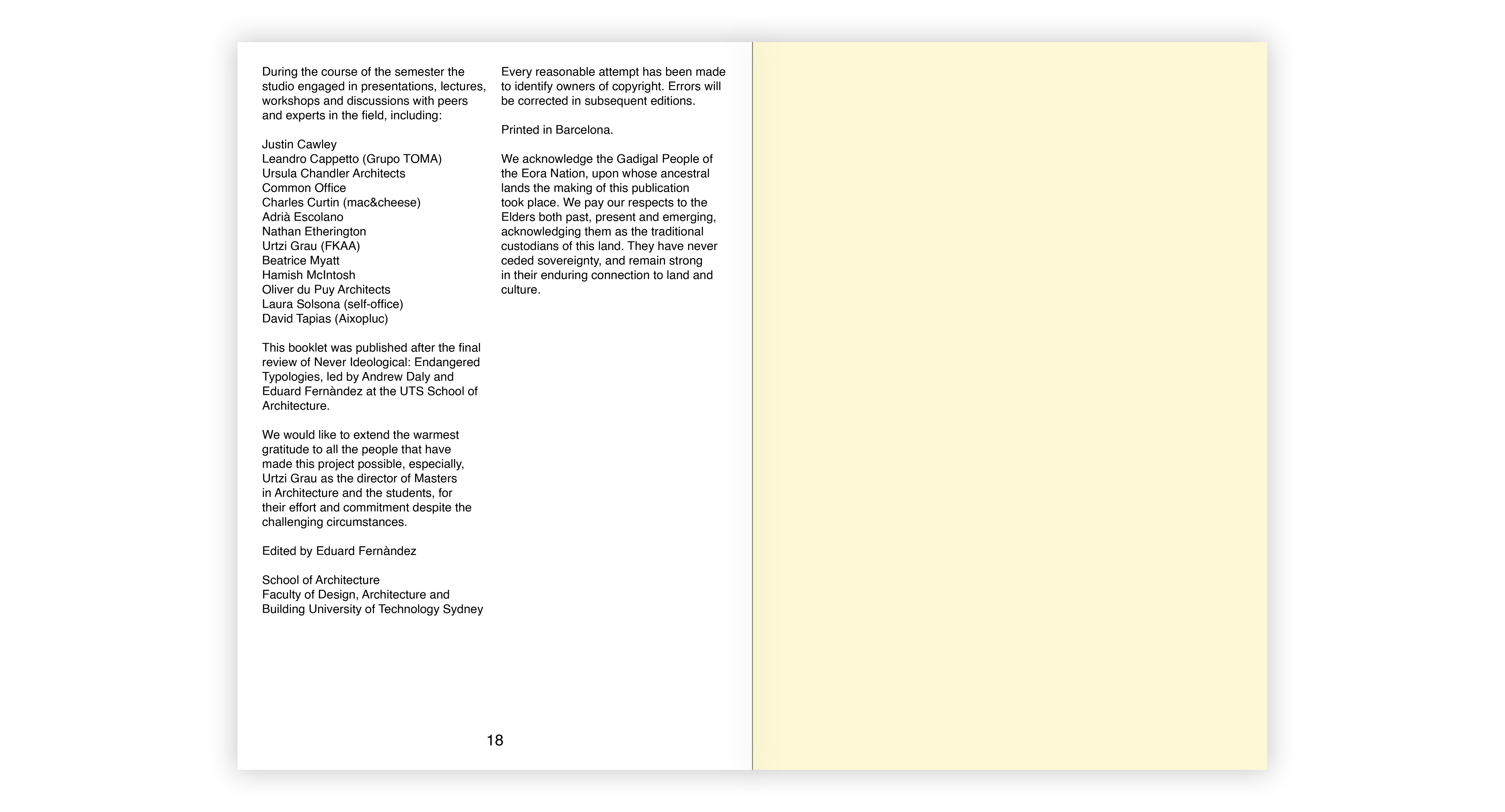










Never Ideological: Endangered Typologies
M.Arch Design Studio
University of Technology Sydney
Master’s Director: Urtzi Grau (FKAA)
Studio leader with Andrew Daly (Supercontext)
Never Ideological forms the first of a following series of studios that use Sydney’s suburbs as a laboratory for typological studies.
Abandoning the city of big-business development, we turn to the suburbs to investigate the potential reuse of anomalous suburban sites. Once serving critical infrastructural and community purposes, these are often falling defunct and being subdivided and sacrificed to urban sprawl.
Water Reservoirs and Electric Substations, which were once used to colonize Sydney’s periphery, will be preserved and will provide a public benefit, again, yet this time through the insertion of a civic program.
In the absence of a guiding vision to Sydney’s past and future, we search for a distinctiveness to define the current condition of a city that has grown randomly over time. Sydney is a suburban – the prevalent myth of a coastal city no longer holds; the studio believes that the suburbs represent the actual socio-political and environmental challenge of the future.
M.Arch Design Studio
University of Technology Sydney
Master’s Director: Urtzi Grau (FKAA)
Studio leader with Andrew Daly (Supercontext)
Never Ideological forms the first of a following series of studios that use Sydney’s suburbs as a laboratory for typological studies.
Abandoning the city of big-business development, we turn to the suburbs to investigate the potential reuse of anomalous suburban sites. Once serving critical infrastructural and community purposes, these are often falling defunct and being subdivided and sacrificed to urban sprawl.
Water Reservoirs and Electric Substations, which were once used to colonize Sydney’s periphery, will be preserved and will provide a public benefit, again, yet this time through the insertion of a civic program.
In the absence of a guiding vision to Sydney’s past and future, we search for a distinctiveness to define the current condition of a city that has grown randomly over time. Sydney is a suburban – the prevalent myth of a coastal city no longer holds; the studio believes that the suburbs represent the actual socio-political and environmental challenge of the future.
Suburbia was originally developed to preserve and extend the logics of capitalism. Monofunctional, repeatable suburbs proliferated in Australia – similar to the US – after both World Wars. The distribution of this infrastructure resulted in several anomalies in the urban fabric. Large, amalgamated plots including religious buildings, clubs, reservoirs and electricity substations, acted as community and infrastructural focal points.
Indeed, reservoirs and substations were the foundation of suburbia’s infrastructural networks. Occupying prominent suburban sites these buildings were built often to withstand bomb attack during WWII and are often examples of high-quality engineering and unique design. As technology has been improved, many sites like these are rendered redundant and being sold to private development.
This studio believes these architectures, that were once the foundations of the suburbs, should be preserved and continue to build up on communal values by generating a new civic use of the land.
Indeed, reservoirs and substations were the foundation of suburbia’s infrastructural networks. Occupying prominent suburban sites these buildings were built often to withstand bomb attack during WWII and are often examples of high-quality engineering and unique design. As technology has been improved, many sites like these are rendered redundant and being sold to private development.
This studio believes these architectures, that were once the foundations of the suburbs, should be preserved and continue to build up on communal values by generating a new civic use of the land.